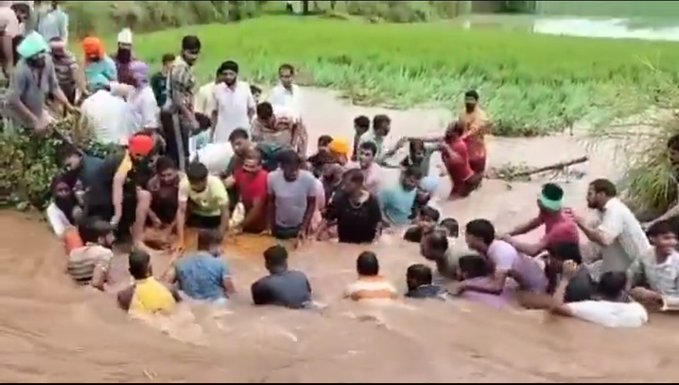 The recurring floods in Punjab have once again highlighted the failure of governments and administrations to learn from past experiences. For more than four decades, Punjab has been facing the devastating effects of floods, yet neither the state nor the central authorities have been able to design a long-term strategy to protect people and their livelihoods. The floods of 1988, 1993, 2010, 2023, and the present year are not only natural disasters but also a testament to systemic neglect.
The recurring floods in Punjab have once again highlighted the failure of governments and administrations to learn from past experiences. For more than four decades, Punjab has been facing the devastating effects of floods, yet neither the state nor the central authorities have been able to design a long-term strategy to protect people and their livelihoods. The floods of 1988, 1993, 2010, 2023, and the present year are not only natural disasters but also a testament to systemic neglect.
Each flood has left behind untold suffering for the people of Punjab. Families have lost homes, farmers have lost crops, and thousands have been displaced. Year after year, promises of relief and rehabilitation are made, but the ground reality remains grim. Compensation is either too little, too late, or lost in bureaucratic red tape. Instead of proactive planning, Punjab is forced into a cycle of reactionary measures after every calamity.
The biggest tragedy lies in the failure of senior officers of the concerned departments who have consistently ignored the need for far-sighted planning. Despite knowing the flood-prone zones and the vulnerability of embankments, no effective steps have been taken to strengthen river banks, regulate sand mining, or create sustainable drainage systems. In fact, unchecked sand mining has worsened the situation by weakening riverbeds and reducing the natural capacity of rivers to contain rising water levels.
The repeated devastation has also highlighted how the people of Punjab are left to fend for themselves in the face of government indifference. From saving stranded villagers to repairing embankments with their own resources, ordinary citizens often step forward where the administration fails. Civil society groups, diaspora organisations, and local communities have shown remarkable resilience, but their efforts cannot replace state responsibility.
The floods of 1988 and 1993 first raised alarm bells about Punjab’s vulnerability, but little was done. The 2010 floods should have been a turning point, yet policies remained on paper. The floods of 2023 once again exposed the poor condition of infrastructure, the failure of early warning systems, and the lack of coordination among departments. Now, with the current devastation, it is clear that history is repeating itself because lessons were never learned.
The impact is not limited to immediate destruction. Floods push farmers deeper into debt as crops are washed away. Entire villages are left without drinking water, electricity, or shelter. Children lose months of education, and the already fragile rural economy suffers heavy setbacks. The psychological trauma of displacement and loss further burdens families already struggling with poverty.
Punjab’s floods are not merely natural calamities—they are man-made disasters, born of administrative neglect, ecological mismanagement, and the absence of long-term vision. Unless governments at both the state and central levels prioritize flood management with sincerity—through river desilting, embankment strengthening, check on illegal mining, and scientific planning—Punjab will continue to drown in the same misery, year after year.
The struggle of the people against these repeated devastations is a testament to their courage, but it also raises sharp questions about the failure of governance. The time has come for accountability, not just promises. Punjab cannot afford to live in fear of the next flood while its people suffer silently.